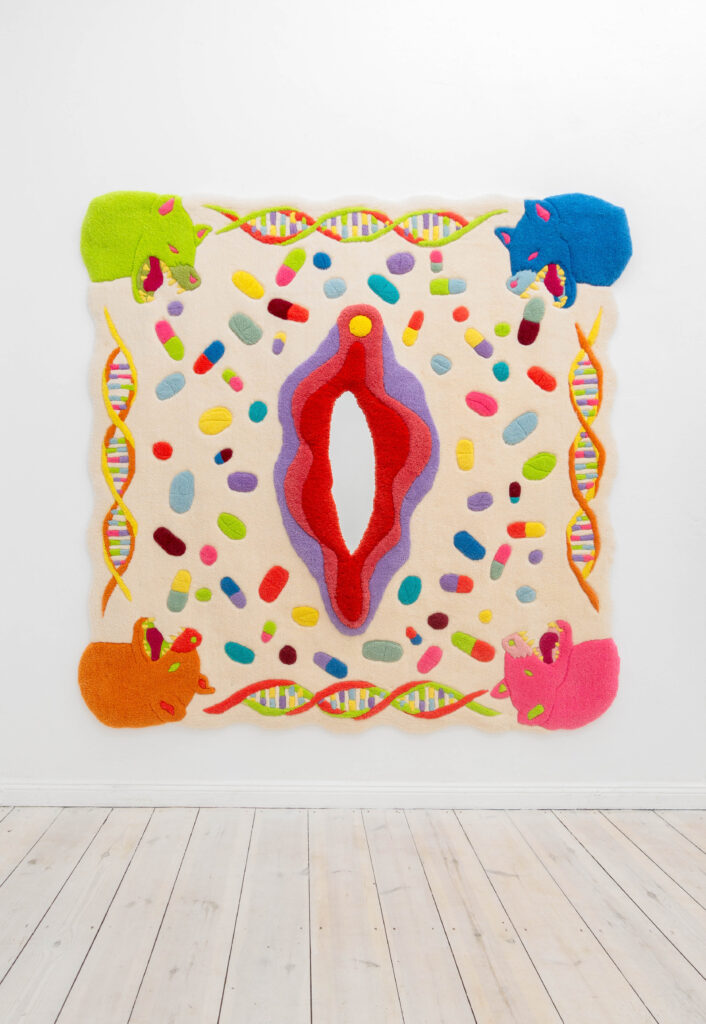
Foto: Galerie Kai Erdmann
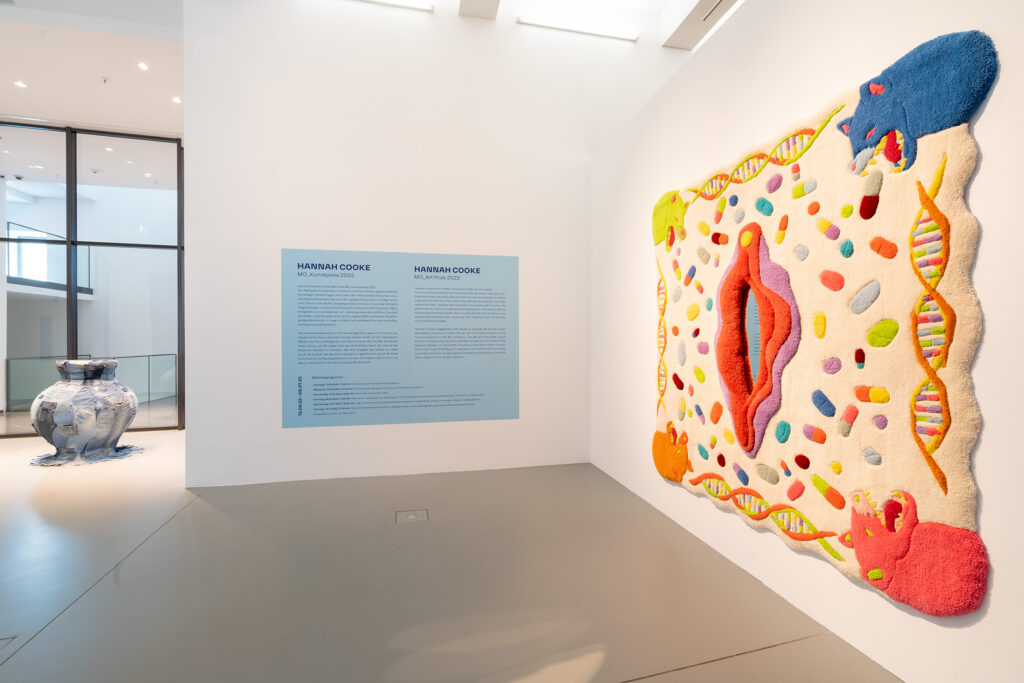
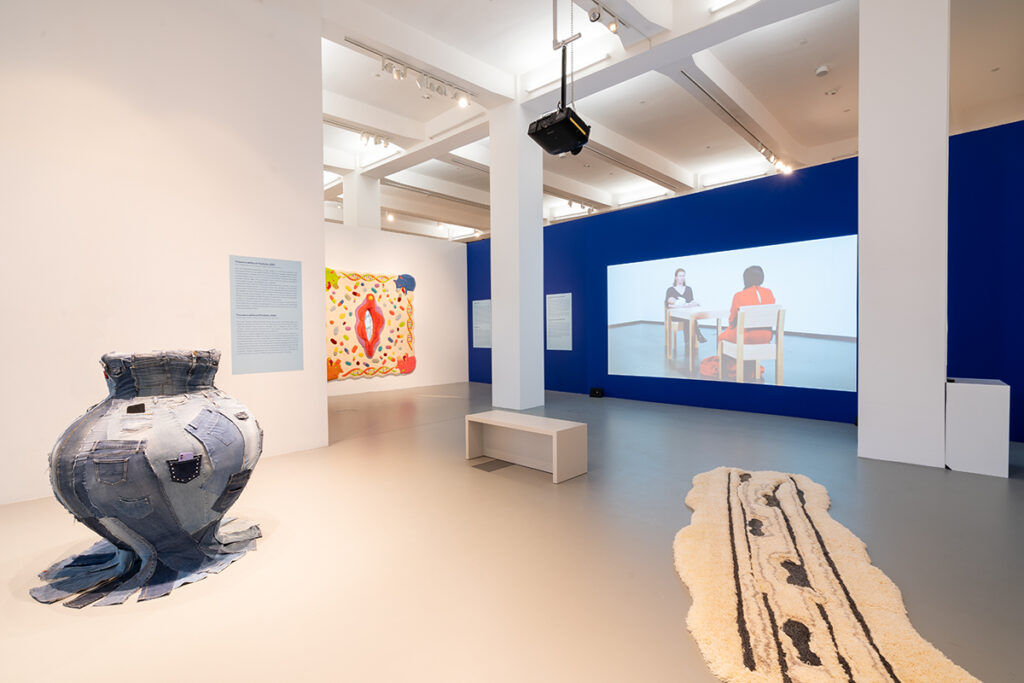
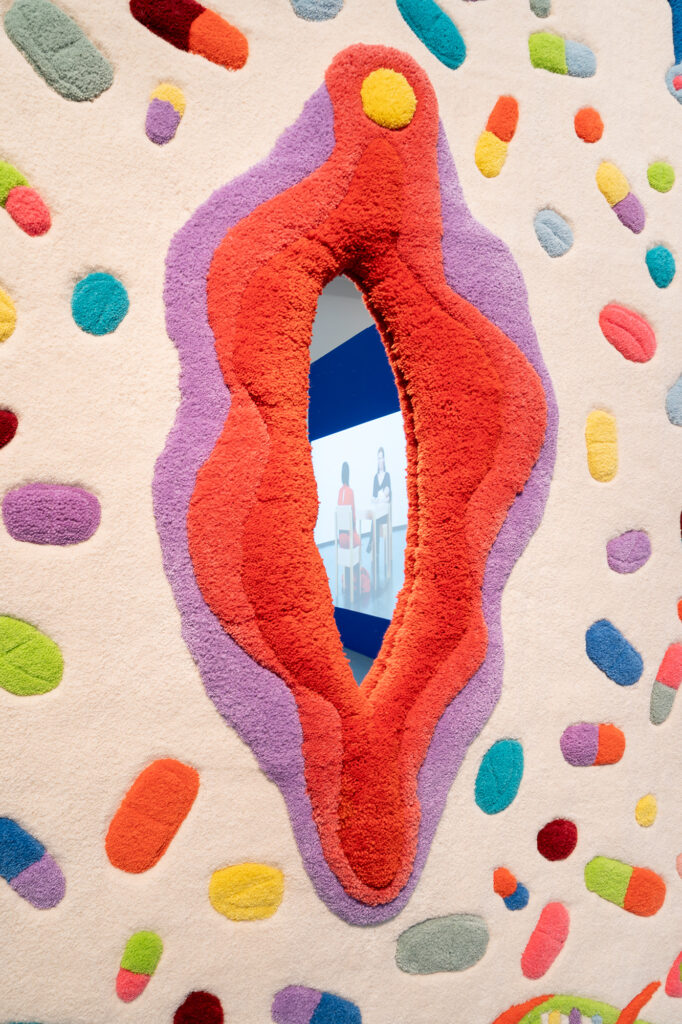
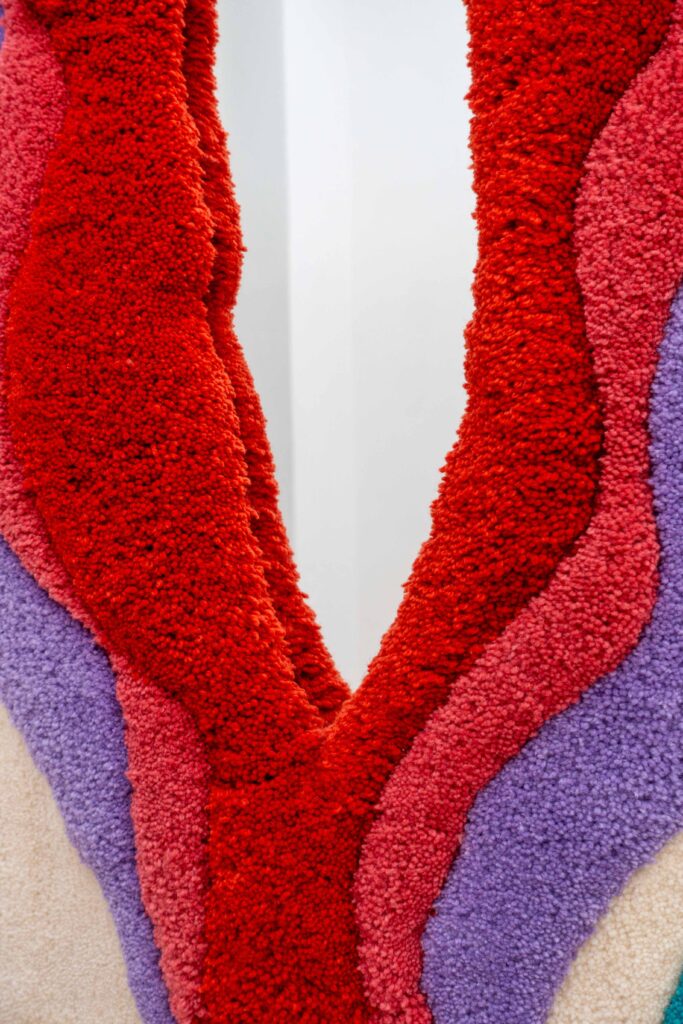
Foto: Galerie Kai Erdmann
Title:
Bitter Pills
Year:
2021
Dimensions:
2,6m x 2,6m
Material:
100% Wool, Cotton base, Latex back
Hissing hyenas spit colourful pills from the four corners of the 2.6m by 2.6m square tapestry that Hannah Cooke tufted from finest wool. Connected by the double helix of our DNA, the heads of the hyenas form the frame of a huge, radiant vulva that stands in the centre of the work and reminds the viewer of their origins through a mirror mounted behind it, without false modesty.
Hyenas are very social, highly intelligent and enjoy playing. In 1799, Schiller wrote in the “Song of the Bell” about the women who become hyenas, and what was meant rather slanderously at the time can today be perceived scientifically as a compliment to every woman. The biologist Kay Holekamp put the image of the animals living in a matriarchy into perspective through her behavioural studies. Hyenas take good care of their clan, they are excellent hunters and have an extremely differentiated vocabulary of sounds with which they communicate with each other. “They’re the coolest animals out there, because they are just really weird,” says Holekamp.
The animals illustrate well how negatively connoted female alliances are often perceived in society. And it is not only allied women, but also successful women, or women who live their lives outside of the classical conception, who have to overcome an anticipatory negative balance. What I call here a negative balance has been affecting women’s visibility for centuries, continuously creating a “gender data gap”.
Hannah Cooke uses this gap between the share of work and consideration in society as a starting point for her work. In the book “Invisible Women” by Caroline Criado-Perez, countless examples are compiled with the most precise figures, which show where women are not thought of and seen everywhere. The lack of data on women leads to injustice and discrimination in everyday life as well as to health disadvantages.
The framing double helix in Hannah Cooke’s tapestry is dedicated to Rosalind Franklin, who used X-ray experiments and cell measurements to discover that DNA consists of a double strand and phosphate residues. Her work was the basis on which James Watson and Francis Crick discovered DNA and thus, unlike her, won the Nobel Prize. The hyenas spit out the bitter pills that were not made for their bodies anyway. This is because in medical research, the female body, although very different from the male body right down to the cells, barely exists.
In a 2013 Nature article, Dr. Elizabeth Pollitzer reports research findings that male and female human cells have “markedly different concentrations of many metabolites”, as well as “mounting evidence” that “cells differ by sex, regardless of the extent to which they have been exposed to sex hormones”, can be read in Criado-Perez. The female body is still presented in anatomy textbooks as a male body with an accentuated breast area and a missing penis. What is not taught cannot be practised, and so women, their experiences and physical conditions are also missing from medical studies, which has already led to the biggest medical scandals in history. In contrast, if you start to think women along, it can even be economically beneficial.
Text excerpt by Seraphine Meya
To read full text in english please klick here
Für den ganzen deutschen Text bitte hier klicken
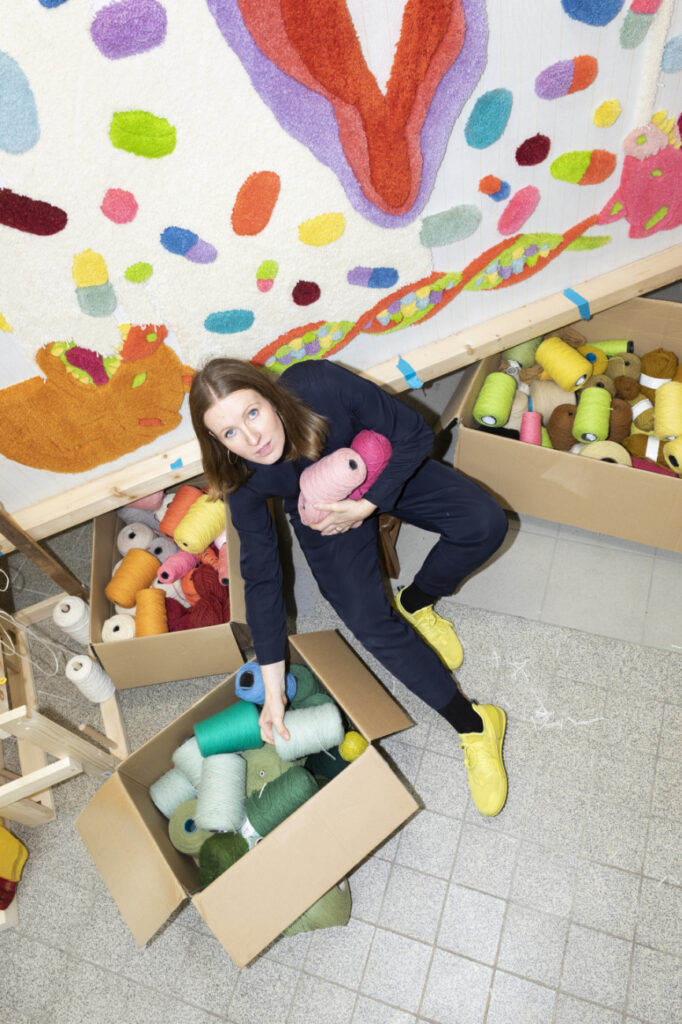
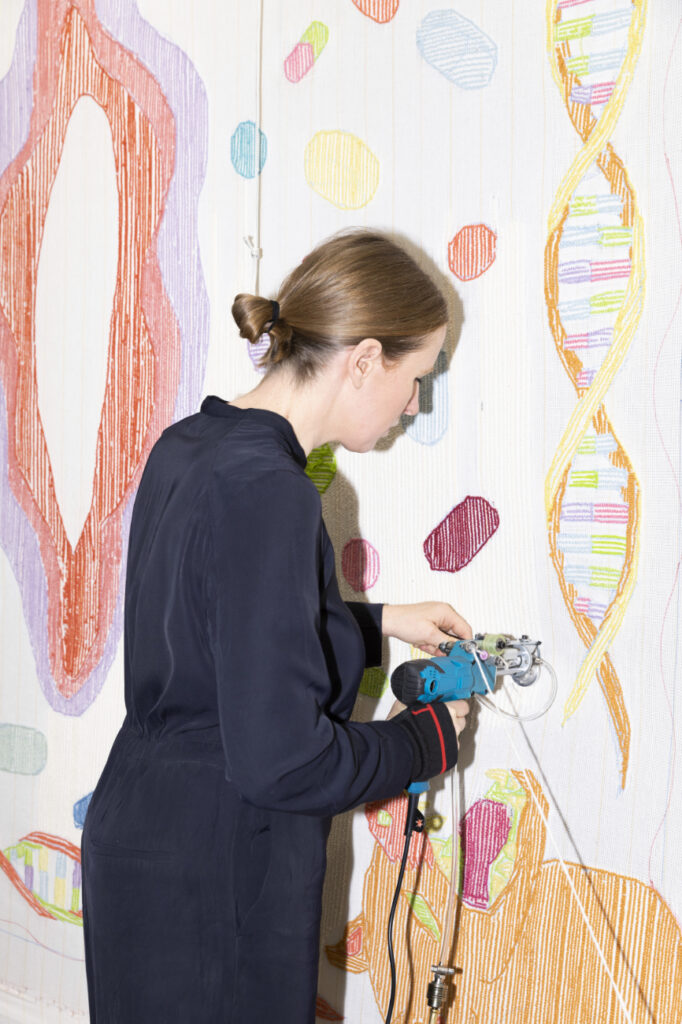
supported by



